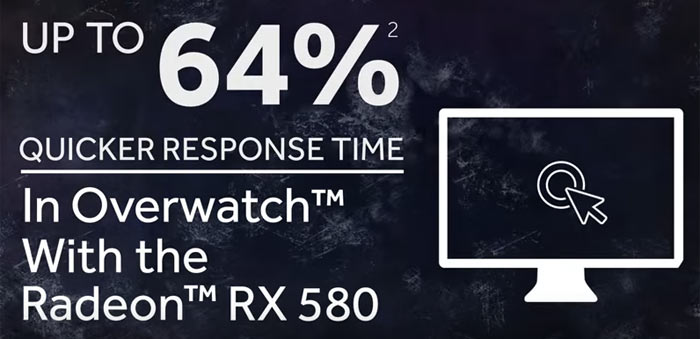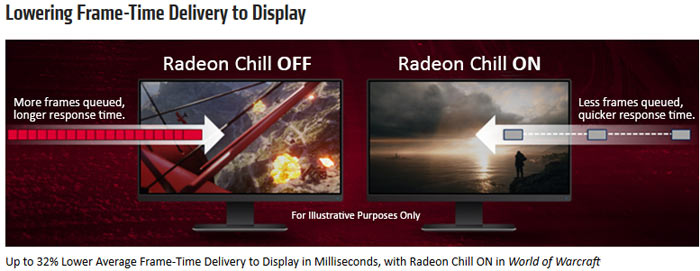AMD introduced its Radeon Chill software algorithms in a major update to its driver set back in December last year. Radeon Chill was a significant new feature in the Radeon Software Crimson ReLive Drivers alongside the titular ReLive screen recording and streaming features.
In a Radeon Tech Talk published at the time of the ReLive launch senior AMD exec Scott Wasson outlined the functionality of Radeon Chill. Summing up the new functionalty on offer Wasson said "Radeon Chill is a software algorithm which reduces system power consumption while maintaining an excellent gaming experience". He added that the overall goal of the feature was that gamers wouldn't notice Radeon Chill was at work in the background saving power and helping maintain a cooler, quieter running system.
Radeon Chill works by scaling down framerates when it is detected that your on screen action is in a relative calm period. Perhaps you are crouching behind some cover, stealthily considering your next move, or similar.
In a new video published to coincide with the launch of the Radeon RX 500 Series, (including the new RX 580) AMD reminds us of another beneficial Radeon Chill feature. Above you can watch the 'Radeon Chill Empowers the Radeon RX 500 Series' video which claims a significant performance advantage to enabling Radeon Chill.

Looking more closely at the results observed by AMD Performance Labs in February, we see the system tested contained; an AMD Radeon RX 580, an Intel Core i7 6700K, with 8GB of RAM, and was running AMD web driver 17.4.3, Windows 10, and playing Overwatch at 1080p Ultra settings.

With Radeon Chill disabled the above system saw an average input latency of 16.7ms. Enabling Radeon Chill saw the input latency decrease to an average 6.1ms. Response time improvements are derived from having fewer frames queued by the graphics card, explains AMD. Tests were run three times and averaged. AMD notes that results will be driver dependent.
Above you can see the full set of footnotes (click to zoom) backing up AMD's claims of improved response time and thus slicker and smoother on screen action. Also you can look through the details of the tests demonstrating AMD's cooler / quieter, and more efficient gameplay.

Radeon Chill requires game-specific profiles and currently is able to work its magic in 19 select PC games (scroll down liked page and select the whitelist tab for the games list). If you play any of these games on your Radeon hardware its worth checking that the feature is toggled on.














